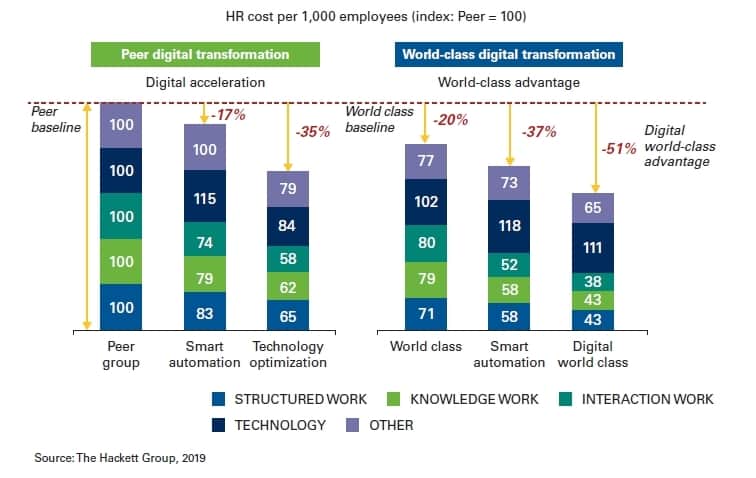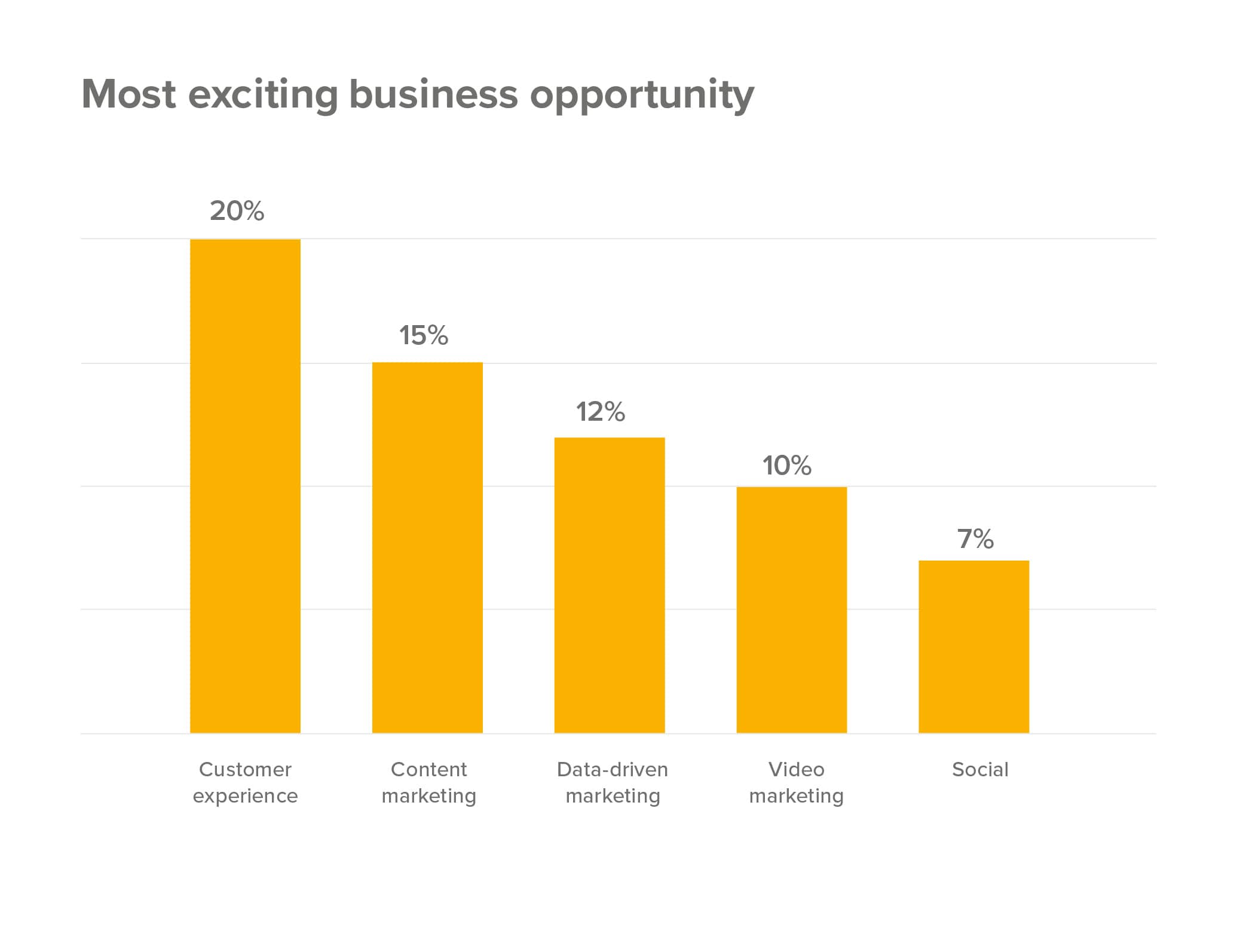Top Automation Benefits for Your Customers (and How to Leverage Them)



The digital era has seen the rise of automation from somewhat of an option to a total must-have for all businesses. Most companies attribute their continued success to the adoption of automation that powers a good chunk of their operations and processes.
Add AI to this mix and you’ve got an unbeatable promise: automate your business with AI-powered intelligence.
By the way, did you know that SyncApps uses AI to recommend the right automation for your business? I’m not talking about generic recommendations, but tailored ones designed to boost your revenue and profit. Give it a shot, it’s 100% free to try!
Automation has now become a strategic business enabler due to its effectiveness and its proven ability to accelerate growth, as well as maximize market opportunities.
The evolution of customer preferences has significantly contributed to the rise in automation over the past few years. Automation now allows businesses to provide speed, convenience, and an improved customer experience—some of the immediate benefits that can be easily realized.
Automation has now become widespread. There’s no sector that currently doesn’t operate without some sort of business automation. It’s almost becoming the backbone of a business.
Take the airline industry, for example. Airports, especially the busiest ones, are all incorporating automation in the ticketing systems in order to cope with rising passenger numbers.
For passengers, being able to navigate through an airport within the shortest time possible is extremely important. Airports are now keen on simplifying passengers’ journeys by offering self-service solutions in the form of self-service kiosks, that, in turn, help avoid unnecessary delays.

Image Source: Business Wire
It is estimated that the global self-service kiosk market is expected to reach USD 20 billion by 2022.
Being able to significantly keep costs down is a big driving factor for the rise in the demand for such self-service solutions.
Well, first of all, because your business, no matter how big or small, even startups, needs automation in order to remain competitive, especially in a market where consumers are constantly demanding a lot from you. Can you imagine still posting manually on social media?
Or filtering your email segments by hand? Moving your Salesforce data to Mailchimp manually?
If any of these sound familiar, it’s time you let automation and integration handle manual tasks. Forget about manual segmentation and data migration, automate it in 10 mins or less.
Another important reason why you should seriously consider automation is savings. Companies are saving quite a lot through wide-scale automation. By 2018, 26 percent of U.S. companies had adopted automation.
Studies show that adopting automation will save companies up to $165 billion by 2022. That’s more than enough reason to make automation a priority for your business.
Even slight automation has the capacity to transform a business in ways we never imagined. However small the automation is, it will always be appreciated by the customer. This basically shows that you care and that you are willing to go the extra mile to accommodate their needs and make it easy to do business with you.
For the majority of people, the benefits of automating processes include the elimination of routine and boring tasks, saving time, and cost reduction.

Image source: Business Wire
However, there is more to automation than these usual advantages.
Some organizations still view automation as a technology that is being shoved down their throats. As such, while a good number of them have invested in one or more automation software, they still wish they didn’t.
Let’s just say that they are in it because everyone else is doing it. This means that they won’t flex a muscle to make the most out of their automation solutions, and unfortunately, it will not be of any help to their businesses.
If this describes your current situation, you will change your perception by knowing the many benefits of automation – beyond the elimination of routine activities, time-saving and cost reduction – and then finding opportunities to relay what you’ve learned for the greater good of everyone.
Business automation (both BPA and RPA) is currently in an exciting phase of growth. On the technology adoption lifecycle, automation is almost reaching the top of the bell curve, and hence on the verge of breaking out into mainstream maturity.

Image source: Medium.com
It, therefore, means that the process automation market is at the peak of the global explosion. Perhaps the most eye-opening truth is the amount of money involved in what is still largely considered an underutilized technology.
A multibillion-dollar industry, automation has attained full acceleration. However, while the majority of organizations have adopted an impressive automation level, only a few exhibit mass-scale adoptions. The business environment is dealing with a massive disruptor – with the potential to cause a revolution in the world of business.
The global statistics are quite interesting. As we speak, the non-industrial digital process automation industry is worth $6.76 billion. This figure is expected to grow to $12.61 billion by 2023.
A significant part of this growth can be traced to the increasing number of companies—74 percent—that are actively exploring new use cases for automation. Between 2017 and 2019, the percentage of organizations implementing automation in mission-critical processes rose by 34 percent, up from 16 percent.
It is not difficult to see how lucrative the process automation market is and hence the need to align your business and customers accordingly. Use this opportunity to meet the needs of your customers more satisfactorily.
Make use of automation to earn your company happy customers who will voluntarily evangelize only the best things about your products/services.
Quality and consistency are your customer’s number one concern. It, therefore, goes without saying that if your business is struggling to deliver these two extremely important things, then it is high time you consider integrating some automation solutions that can help you deliver quality and consistency.
Maintaining consistent quality is essential. By using automation, you can ensure that every action or operation is performed in the same way. This will lead to reliable and high-quality results overall.
Consistency in customer service, for instance, is also guaranteed with automation. It will ensure that your customers will consistently experience the same level of service from your business.
Cart abandonment is really annoying, especially for e-commerce businesses. The truth is you can not avoid it altogether.
However, you can encourage online shoppers to pick up where they left off and hopefully complete their purchase journey.
Did you know that cart abandonment is reportedly responsible for over $4.6 trillion in lost e-commerce sales?

Image Source: Optinmonster
Automation can help you reduce cart abandonment by sending out automated messages to remind the customer to come back and continue with his or her shopping. That polite (automated) reminder could be just what the customer needs to finish the purchase.
SyncApps, for instance, has some cool, tried and tested e-commerce as well as other industry-specific integration solutions that can help you to keep up with the pace of your customers.
Being able to maintain and strengthen your relationship with a customer is one of the most important factors of business success. A good customer relationship is built and cultivated by being consistent in how you interact with them as well as with the quality service you provide.
Automation helps you keep your customer interaction going mainly because it will be done at regular intervals and at a specified frequency. The customer can, therefore, trust that you will always deliver as expected.
By adopting automation, you will be able to fill up the communication gap between your business and customers, which will enable you to solidify your relationships, build trust, attract more customers, and ensure customer retention. According to Don’t Panic London, automation improves customer retention by offering personalized experiences, efficient customer service, and proactive engagement, all of which contribute to a stronger and more lasting customer-business relationship.
Customers hate to be kept waiting when they get in touch with your company’s customer service. Long wait times can make you experience unimaginable problems with your customers.
As customers become more and more demanding and tech-savvy, their top expectation when it comes to service delivery is speed. In short, how fast is your turnaround?
According to the study below, fast response to inquiries and complaints ranks top on the list of the most important components of an ideal customer experience.

Image source: Business 2 Community
To eliminate the possible problems which include losing important clients, you need to devise ways of making the wait times as short as possible. You have two options at your disposal – recruiting additional agents or automating the customer support function.
One way of automating the customer service channel is via interactive voice recognition (IVR). IVR allows callers to interact with a voice recognition program and then direct them to the appropriate interlocutor according to their needs.
Besides helping your customer service team to save time, IVR System also eliminates the chances of a customer going through agonizing and frustrating moments, and in turn, denies them the incentive to complain or churn.

Image source: Tech Target
Another way that you can improve your customer service through automation is by using predictive analytics to get rid of customer friction points. Utilize tools such as voice recognition, call recording, and usage monitoring to keep track of how customers interact with your company/products, the sales team, as well as the support funnel.
By keeping product adoption under surveillance, you can enhance customer retention and also identify problem points so as to correct them in a good time.
Generation Y – born in the 1980s and 1990s – is coming close to overtaking Generation X and baby boomers both in numbers and purchasing power. This generation is seen as the one showing an increasing familiarity with electronic and digital technology.
After the millennial generation, Generation Y will soon make up the biggest part of the customer pool. Those already witnessing this imminent change are already feeling threatened – especially the ones who haven’t fully embraced automation.
The entire Generation Y has in many instances been collectively characterized as lazy, aloof and entitled. Since they are digital natives, members of Generation Y have a good side as well. They have mostly come out as self-reliant, savvy solvers of problems, and quite resourceful.
Thanks to these traits, Gen Yers have consistently responded favorably to automated services. A Capterra study revealed that 70 percent of Generation Y women claimed to be the most comfortable when solving a problem without having to interact with a human being.
On the other hand, 60 percent of the millennials attested to having felt great about themselves and the company upon sorting out a support problem on their own.
Generation Y doesn’t only feel comfortable solving a problem via automated customer service, but, they also wouldn’t mind achieving the same on their own.
Customers who are adequately trained and informed are less likely to need customer support – and this doesn’t only apply to millennials, but to other demographics as well.

Image source: Pro Profs
In that case, rather than resent the resourcefulness of the millennials and Gen Yers, businesses should embrace this quality and create an enabling atmosphere for them. Instead of feeling threatened, businesses should embrace automated services and then offer the necessary customer awareness and training to cater to the needs of this customer demographic.
So, get to work. Learn what millennials and their younger friends love and what they don’t love. Determine ways of making your customer service millennial-friendly. Because, whether you like it or not, you will have to do it sooner than later if you want your business to grow.
In recent years, conversations surrounding customer experience have increased significantly – and this is for a good reason. Nowadays, consumers have become choosy and more than ever, they know their rights. Among the factors that have contributed to this behavior is the stiff competition in all industries.
Another factor is the presence of the internet. A lot of businesses, including the ones that operate in brick-and-mortar setups, have a huge presence on the internet. From social media platforms to websites and apps organizations have discovered the benefit of being available on the internet.
On the other hand, consumers use the competition and ease of shopping (over the internet) to their advantage. In a blink of an eye, your customer can move to your competitor, if you cannot offer them the level of customer experience they desire.
Gone are the days when customers based their loyalty on the product or price. Today, they stay true to a company and its product because of the experience they get. What does this mean for a firm that chooses to turn a blind eye to customer experience? You will be on the losing end.
You lose customers and unfortunately, with that attitude, it is nearly impossible to attract more. Businesses have no choice but to give in to and keep up with the ever-changing and growing demands of consumers.
It explains why customer experience has quickly become a top priority for companies and it will be no different in 2020. A survey conducted by Econsultancy revealed that 22 percent of the companies they interviewed identified customer experience as the most exciting 2019 business opportunity. Content marketing and mobile marketing came second and third with 15 percent and 13 percent respectively.

Image source: Super Office
The following statistics explain where this excitement is coming from:
Customer experience is a relatively wide topic and in this case, we will only emphasize the importance of pursuing consistency.

Image Source: Super Office
A business that manages to deliver a one-of-a-kind customer experience succeeds in customer acquisition and retention. And one way you can achieve this is by ensuring consistency because it assists in setting expectations, streamlining customer interactions, building relationships and cultivating trust.
Companies have had difficulties maintaining consistency mainly due to the availability of cross-device shopping through a wide array of channels. Therefore, process and technology change is crucial to ensure consistent customer experience across multiple platforms.
Additionally, consumers must get seamless services across all channels such as the website, social media, chat, and phone which should be based on their real-time behaviors as well as the way they interact with the brand.
When you have consistent customer experience in place in all the company’s touchpoints, it becomes easier to always deliver appropriate content/offers at the right time and place.
In turn, the business will witness effective progress as far as converting prospects into buyers/customers is concerned.
You need automation to not only optimize and standardize but also to streamline business processes like marketing, processing of orders, shipment, and the provision of after-sales support – and in turn, offer a consistent brand experience capable of meeting customer expectations, besides building trust.
Automation also facilitates proper management of customer communications while making sure that none of the customers experience the feeling of being ignored or their needs being overlooked.
For instance, a business can generate a system that allows the automatic creation of a workflow as soon as a customer email hits the inbox so it can be submitted to the relevant department and then followed up until the issue is resolved.
Automation also gives the company the capacity to closely keep track of business processes and collect data to help tweak workflows and consequently, improve customer experience.
In a nutshell, automation can help you ensure a consistent customer experience by:

Image Source: Inside Intercom
With so many automation technologies at your disposal, you cannot blame the business environment or anyone else but yourself, if your company fails to offer a consistent customer experience.
You shouldn’t just automate simply because every other company is doing it. In any case, different organizations have varying needs and processes, while closely related, aren’t a carbon copy.
Therefore, if your company is in the process of investing in automation, make sure you have a solid automation strategy of how this investment will help you achieve your overall goal.
It’s imperative that you get everything right from the word go, or at the very least ensure that nearly every aspect is done correctly the first time. Since it is an investment, organizations must be keen to minimize the wastage of resources.
The secret to getting things right in automation is determining the ideal processes to automate. While it can be challenging, it is doable and worth checking (the most appropriate process to automate) to ensure a good return on investment.
Here are a few tell-tale signs that a process requires automation as soon as possible.
In other words, go for recurrent, stable processes, and the ones that require little or no human intervention.
Successful automation of processes also demands the engagement of the heads of departments and process owners. Speak to them about possible automation of repetitive and business processes.
The only way to get their approval and hence, eliminate the possibility of resistance to change as early as possible is to make them own the idea from the very beginning. You will be surprised at the considerable input and valuable feedback they will be willing to give.
Have brainstorming sessions for potential process automation solutions. Should your team be short of ideas, consider asking leading questions such as;
Resist the urge to concentrate on business process automation alone. Consider the process in totality. Determine how the daily work of serving the customers can improve if some activities were magically accomplished. Last but not least, prioritize your ideas, instead of focusing on the outcome alone. Are you having challenges figuring out how to start your automation journey? Talk to our experts today and start reaping the above benefits and more.